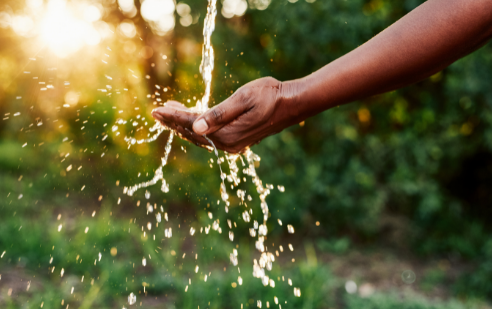By Nayantara Singh
“163 million Indians do not have access to safe drinking water. ”
I’m sure you have seen an alarming statistic resembling this, relating to India’s water crisis. A simple google search clearly shows that India is grappling with a severe water crisis. However, in order to understand the magnitude of the situation, one needs to look deeper and understand the factors leading to this acute shortage. This piece outlines the significant causes of this crisis.
Groundwater Usage
Over 55% of Indians earn their livelihoods through farming, making agriculture a prominent sector in India. Naturally, this leads to a high demand for irrigation and water sources.
Farmers largely depend on groundwater as their water source. As India continues to mass produce water intensive crops, like rice, wheat and cotton, groundwater consumption is skyrocketing. This has led to the drying of aquifers, or groundwater sources, contributing to the scarcity of water in the country.
Poor Water Quality
The water present in the majority of Indian rivers and basins, such as Krishna and Godavari, is extremely polluted and unfit for drinking. There has been a lack of investment in water treatment, which has led to the waste of the majority of India’s water content. As a result, the country holds only 1,000 cubic meters of water a year, per person. For context, 1,250 liters of water are used to fill half an Olympic sized pool- that is more than the average Indian’s yearly consumption of water. According to the United Nations, a “water-stressed” nation has less than 1,700 cubic meters of water a year, per person, making it evident that India falls under this category.
Regulation`
The debate of laws in relation to water usage presents itself in the form of two convincing points of view. The premise of the first view is that water is a necessity for human life. This brings forth the argument that a basic human need should not be strictly regulated. The second view explains that the existing lack of laws restricting water usage has led to a dire water crisis. Today, India does not have specific laws relating to usage of groundwater and surface water, with an exception of the 1974 water pollution act. This gap in the legislature has led to exploitation and depletion of water resources.
Global Warming
Global warming impacts nearly every natural resource, and water is no exception. Climate change is causing a change in the water cycle. The water cycle is the cycle where evaporation and condensation lead to precipitation (rainfall) and runoff (excess liquid from rainfall). Due to rising temperatures, evaporation rates are increasing. This leads to quicker drying up of water bodies and water resources on land, increasing scarcity.
However, it also leads to increased rainfall in certain areas. This increases rainfall in certain areas, leading to more water resources. How does this contribute to scarcity, though? This altered water cycle also leads to shorter rainfall seasons and excruciating drought periods in other areas, decreasing water resources in these areas. Andhra Pradesh is an example of a drought-prone state.
Water Pollution
Seventy percent of India’s surface water cannot be consumed, due to the toxins and waste water entering it. Water pollution is causing reduced availability of drinking water, and an increased volume of wasted water. Freshwater resources like rivers cannot be utilized efficiently, due to the toxic materials they hold. They cannot be used as drinking water, for agricultural purposes etc. It is well known that a tiny fraction of the earth’s water content is drinkable. Out of the 3% of freshwater the world holds, around 1.2% is fit for consumption. Due to water pollution, the availability of drinking water is reducing rapidly.
It is now evident that India’s water crisis is caused by a cumulation of several factors. It is vital to recognize and understand these causes, to be aware of the worsening water situation that exists today. This article attempts to break down a few of these contributing elements, and explain how India came to be, and continues to be a “water stressed” nation.
Sources
Climate Change and Water Scarcity in India. https://globalwarming.com/articles/climate-change-and-water-scarcity-in-india/.
CPCB | Central Pollution Control Board. https://cpcb.nic.in/water-pollution/.
“Depleting Groundwater: Why India Needs to Rethink Many Agri Practices.” India Today, https://www.indiatoday.in/diu/story/depleting-groundwater-india-agriculture-farmers-water-intensive-crops-2506372-2024-02-23.
Earth’s Fresh Water. https://education.nationalgeographic.org/resource/earths-fresh-water.
“Water Scarcity and Quality.” UNESCO, 8 Jan. 2015, https://en.unesco.org/themes/water-security/hydrology/water-scarcity-and-quality.
International Decade for Action “Water for Life” 2005-2015. Focus Areas: Water Scarcity. https://www.un.org/waterforlifedecade/scarcity.shtml.
“More than 55% of Indians Make a Living from Farming. Here’s How We Can Double Their Income.” World Economic Forum, 4 Oct. 2017, https://www.weforum.org/agenda/2017/10/more-than-55-of-indians-make-a-living-from-farming-heres-how-we-can-double-their-income/.
“The Water Crisis In India: Everything You Need To Know.” SIWI – Leading Expert in Water Governance, https://siwi.org/latest/water-crisis-india-everything-need-know/.
“UN Report on Groundwater Extraction: Every Drop Counts.” The Indian Express, 1 Nov. 2023, https://indianexpress.com/article/opinion/editorials/un-report-on-groundwater-extraction-every-drop-counts-9008120/.
Water Crisis in India: The World’s Largest Groundwater User. https://www.teriin.org/article/water-crisis-india-worlds-largest-groundwater-user.
“Water In India – India’s Water Crisis & Sanitation Issues.” Water.Org, https://water.org/our-impact/where-we-work/india/.
Water Laws in India – Indian Law Portal. 4 July 2020, https://indianlawportal.co.in/water-laws-in-india/.
“Water Pollution Is Killing Millions of Indians. Here’s How Technology and Reliable Data Can Change That.” World Economic Forum, 4 Oct. 2019, https://www.weforum.org/agenda/2019/10/water-pollution-in-india-data-tech-solution/.
“World Environment Day 2022: Climate Change, River Pollution and Water Scarcity: Why India Is in Crises.” CNBCTV18, 3 June 2022, https://www.cnbctv18.com/environment/world-environment-day-2022-climate-change-river-pollution-and-water-scarcity-why-india-is-in-crises-13691942.htm.
Zhong, Raymond. “Warming Could Push India Toward a Groundwater Crisis.” The New York Times, 1 Sept. 2023. NYTimes.com, https://www.nytimes.com/2023/09/01/climate/india-groundwater-depletion.html.




